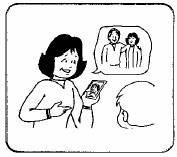
In Lesson 2 you will review sentence patterns in order to reinforce what you have learned about the relationship between the cases of nouns and their use in sentences.
звичайно - usually, as a rule (in Ukraine, this word is frequently used as an exclamation ‘of course!’)
|
Іменники: Відмінки
Nouns: Cases |
If we examine the conversation in Dialogue 9, we see that several sentence patterns are used. The new words товариш (male friend) and товаришка (female friend) are also introduced.
Sentence Pattern 1: Subject – Verb – Complement
| Чи Роман твій товариш, Оленко? |
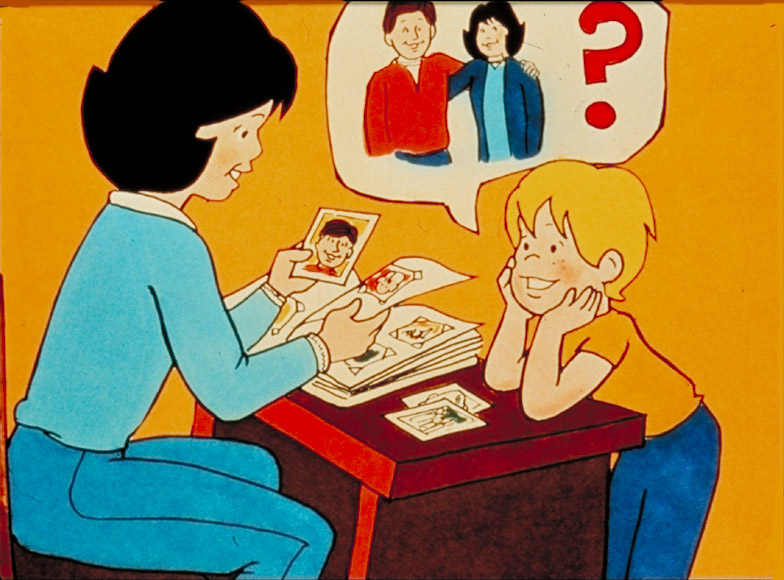 |
|
Study the underlined nouns and the description of their use in the sentence given below.
• Роман - Nominative case; subject of the sentence.
• є (is) – this verb is understood in this sentence.
• товариш - Nominative case; it follows the omitted verb and it complements (helps to describe) the subject Роман.
• Оленко - Vocative case; shows that Olenka is being addressed.
The same pattern is repeated in the next sentence.
| Так, він мій товариш. |
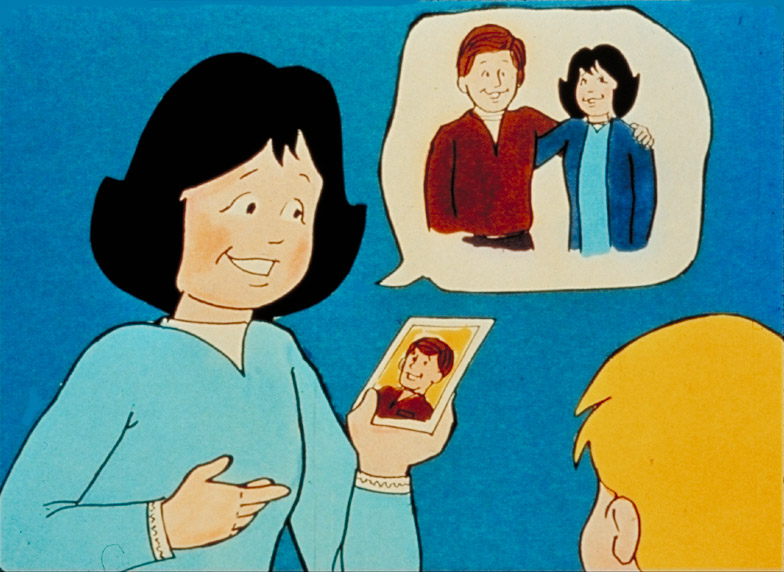 |
|
А Лариса моя товаришка.
|
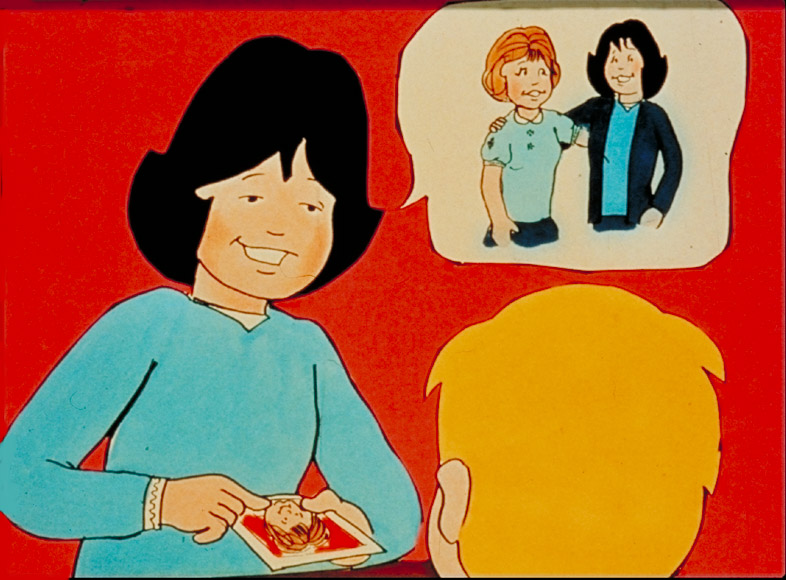 |
|
Sentence Pattern #2 – Subject – Verb – (Prepositional) phrase
In Ukrainian, certain prepositions govern (or dominate) certain cases of nouns. When a noun follows a preposition, it becomes a prepositional phrase.
Звичайно ми розмовляємо про спорт.
|
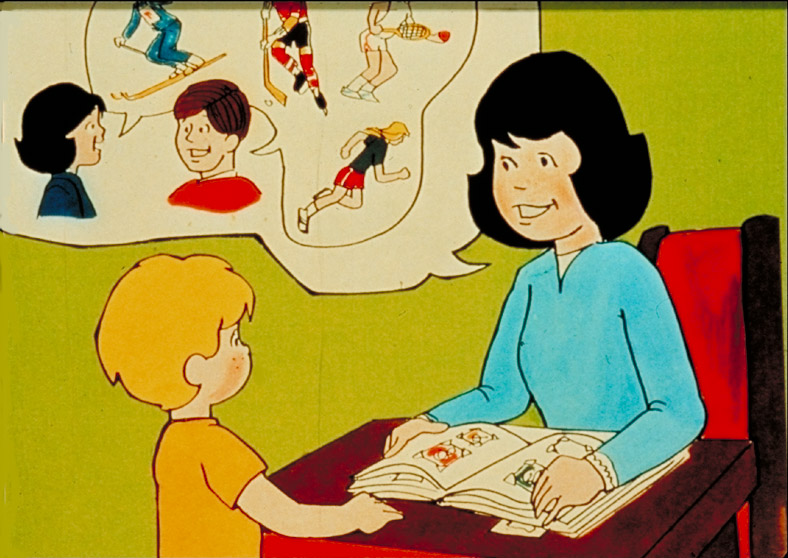 |
|
• ми - this pronoun is the subject of the sentence
• розмовляємо - verb
• про спорт - prepositional phrase; the noun спорт is in the Accusative Case.
A chart at the end of this lesson highlights which prepositions govern certain cases.
Sentence Pattern #3 – Subject – Verb – Phrase – Phrase
А з Ларисою ми розмовляємо про Романа.
|
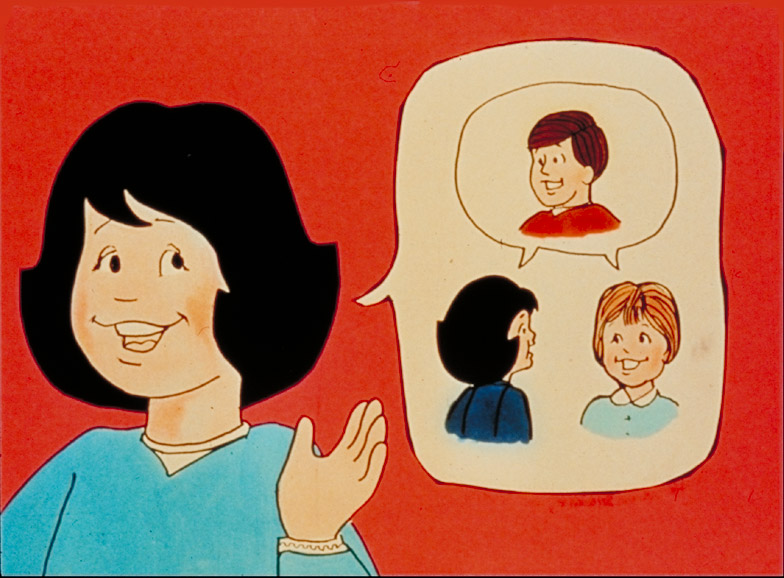 |
|
Про що ти розмовляш iз Романом?
|
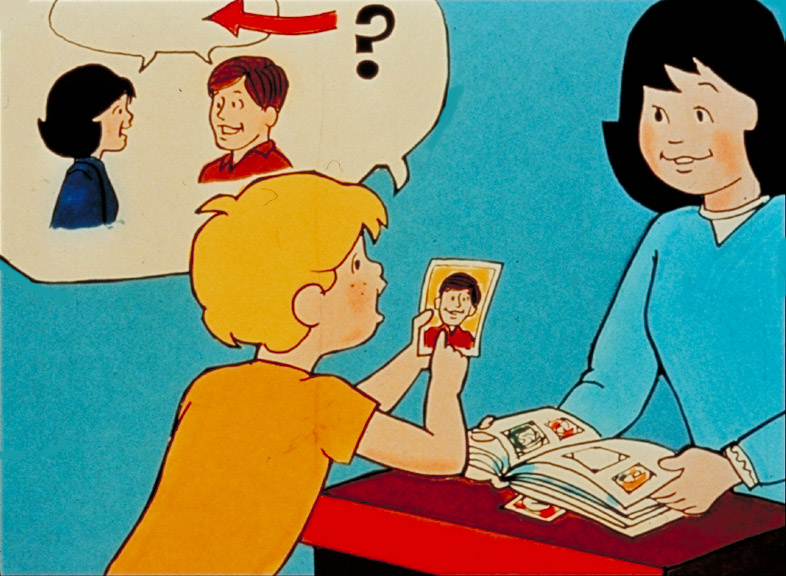 |
|
Both of these sentences are extensions of the sentence pattern (Subject - Verb - Prepositional Phrase) given earlier. Here we have two prepositional phrases to complement the verb розмовляти. If the sentences are rearranged, you will see these phrases more clearly, as follows:
А ми розмовляємо /про Романа / з Ларисою./
Ти розмовляєш / iз Романом / про що?/
• ми, ти – pronouns which are the subject of the sentence
• розмовляємо, розмовляєш – verb
• про Романа, про що – prepositional phrases; the noun Романа and the demonstrative pronoun що are in the Accusative Case after the preposition про.
• з Ларисою, з Романом – prepositional phrase; the nouns Ларисою, Романом are in the Instrumental Case after preposition з.
At this point you will note that a new aspect of the Accusative Case has been presented. In Unit II you were introduced to the Accusative Case of masculine inanimate (non-living) hard-ending nouns. You will recall the following phrases:
Я читаю журнал. Я читаю про спорт.
| Оленка |
про Оленку |
| Надя |
про Надю |
| Марія |
про Марію |
| Feminine nouns: |
a |
------- |
у |
| |
|
|
|
| |
я |
------- |
ю |
Plural inanimate nouns like шахи, квитки, гроші do not change in the Accusative Case.
IX. Exercise 2.i In these examples, both nouns are non-living. Their form does not change in the Accusative Case. However, this is not the case with animate (living) masculine and feminine nouns. Note the changes that occur:
| Хто? (Nominative) |
Про кого? (Accusative) |
| |
|
| Роман |
про Романа |
| Петро |
про Петра |
| Андрій |
про Андрія |
| Михась |
про Михася |
| Masculine nouns: |
hard consonants + a |
| |
soft consonants omitted + я |
IX. Exercise 2.ii
Answer the following sentences by using the correct form of the noun in brackets. You will notice that the sentences follow the pattern Subject – Verb – Prepositional Phrase.
Називний
Nominative |
Кличний
Vocative |
Знахідний
Accusative |
Місцевий
Locative |
Родовий
Genitive |
Орудний
Instrumental |
Давальний
Dative |
Identify the cases below using their Ukrainian names. An example has been provided.
Маруся й Тарас розмовляють про Івана.
• Маруся й Тарас – Називний відмінок
• Івана – Знахідний відмінок
1. З Тарасом Іван розмовляє про Орисю.
___________________ --- ______________________
___________________ --- ______________________
___________________ --- ______________________
2. З ким ти розмовляєш про товариша?
_________________ --- _______________________
3. Ми розмовляємо з татом про маму.
_________________ --- ______________________
_________________ --- ______________________
4. Давид читає журнал про танці.
_________________ --- ______________________
_________________ --- ______________________
_________________ --- ______________________
5. У футбол грають Україна й Канада.
_________________ --- ______________________
_________________ --- ______________________
Family Ties
This Unit introduces you to terms which describe family relationships. Refer to the chart below and study the following Ukrainian terms: grandfather and grandmother, children, daughter and son, husband and wife, mom and dad, parents, brother and sister and female/male cousins. You may label the terms with their English counterparts with the help of your dictionary.
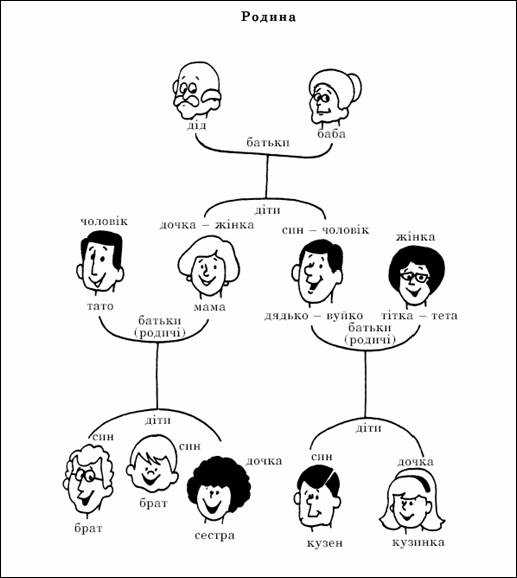
A Few Cultural Notes
• In Canada, it is common to hear the word родина for your family unit and родичі for your parents. In Ukraine, the word сім’я is used to describe the immediate family and the word батьки is used for parents, while the term родичі means relatives.
• In Canada, the words which describe cousins are кузен (male) and кузинка (female). In Ukraine, the terms most often heard are двоюрідний брат and двоюрідна сестра, similar to the English terms ‘brother once removed’ or ‘sister once removed’.
• In Canada, the words тета (тітка) and вуйко are most commonly used for aunt and uncle. In Ukraine, you will often hear terms which distinguish whether these relatives are from the mother’s side or the father’s side.
IX. Exercise 2.iii
Study the following chart and fill in the missing names of family members. You will need to deduce who the missing person is by the description given. When you have completed the exercise, read the passage aloud.
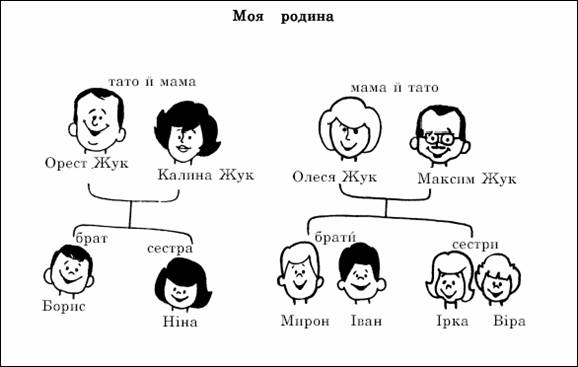
Хто я?
Це моя родина. Мій тато називається Максим Жук, а моя мама ___________ Жук.
Мій брат називається _____________, а мої сестри _____________ та
____________. Моя кузинка ____________, а мій кузен _______________. Мій вуйко
називається ______________, а моя тітка _______________.
Хто я? Ти ____________________.
Review: Cases of Nouns
The summary below is repeated from the previous unit. Review the chart until you are confident in your knowledge of the cases and their function in sentences.
| CASE |
DESCRIPTION |
USE |
Nominative
Називний
|
Basic form of any noun; it tells you who or what the sentence is really about. Helpful questions: Who? What?
|
Subject of the sentence
Хто? Що?
|
Vocative
Кличний
|
This case always refers to a person's name, their status/title, or a collective group.
|
Form of address when speaking directly to an individual or a group.
|
Accusative
Знахідний
|
This noun receives the action of certain verbs. The case shows movement or activity. Helpful questions: When? About whom ? About what?
|
- Direct object of verbs such as писати, читати, мати.
- after the prepositions у/в, на and verbs which convey action, such as грати, or motion, such as іти.
- after the preposition у/в and the days of the week or the months of the year.
- after the preposition про
Що? У що? Про що? Про кого? Коли? |
Locative
Місцевий
|
This case shows the stationary location of someone or something. Helpful question: Where?
|
- after the prepositions у/в, на, при when no motion is involved.
Де?
|
Genitive
Родовий
|
This case is best known for showing possession (Note: there is no 's or s' in Ukrainian) and for its use in negative sentences. It is used after several prepositions and when speaking about partial quantities. Helpful questions: To whom?
|
- after the preposition до
До кого?
|
Instrumental
Орудний
|
Nouns in this case indicate the important (instrumental) role something or someone plays in order for something to take place. Helpful questions: With whom? With what? How?
|
- after the preposition з
З ким?
|
Dative
Давальний
|
The case is used to show how someone or something is indirectly connected to the action conveyed by the verb. Helpful questions: To/For whom?
|
- indirect object of verbs such as телефонувати .
Кому?
|
IX. Exercise 2.iv
Answer the questions about the dialogue. Refer to the chart above if you are unsure of noun endings.
|

|
|
|
|
1. |
Хто розмовляє? |
|
____________________________________________________________ |
|
|
2. |
Де діти? |
|
____________________________________________________________ |
|
|
3. |
З ким Оленка розмовляє? |
|
____________________________________________________________ |
|
|
4. |
Про кого розмовляють Оленка й Лариса? |
|
____________________ ________________________________________ |
|
|
5. |
З ким Оленка розмовляє про спорт? |
|
____________________________________________________________ |
|
|
6. |
Хто товариш? |
|
____________________________________________________________ |
|
|
7 . |
З ким Петрик розмовляє? |
|
____________________________________________________________ |
|
|
8. |
Про що розмовляють Оленка й Роман? |
|
_____________________________________________________________ |
|
|
9 . |
Хто товаришка? |
|
____________________________________________________________ |
|
|
10. |
Про що ти розмовляєш із товаришем і про що ти розмовляєш із товаришкою? |
|
____________________________________________________________ |
|
____________________________________________________________ |
|
____________________________________________________________
|
|











